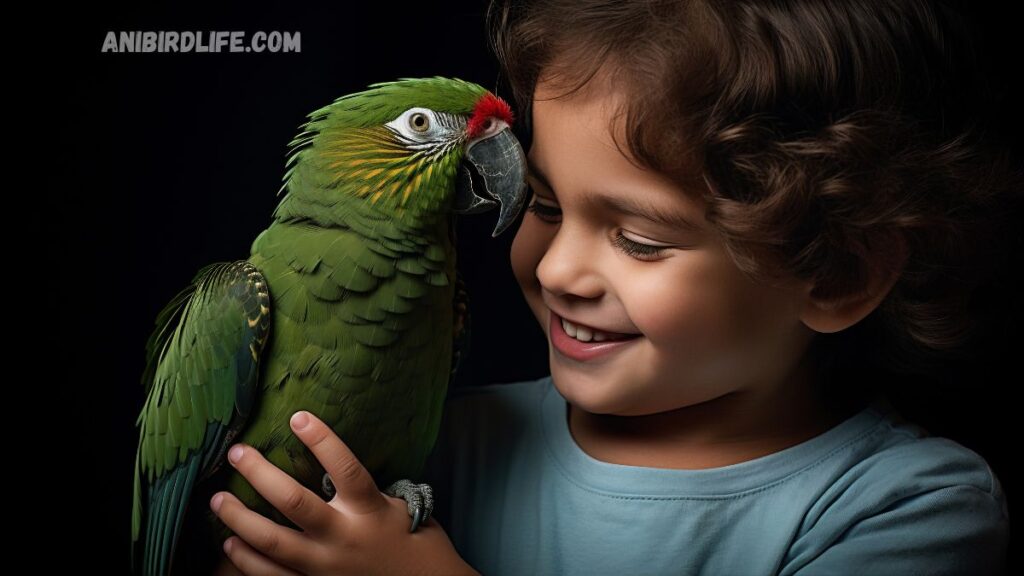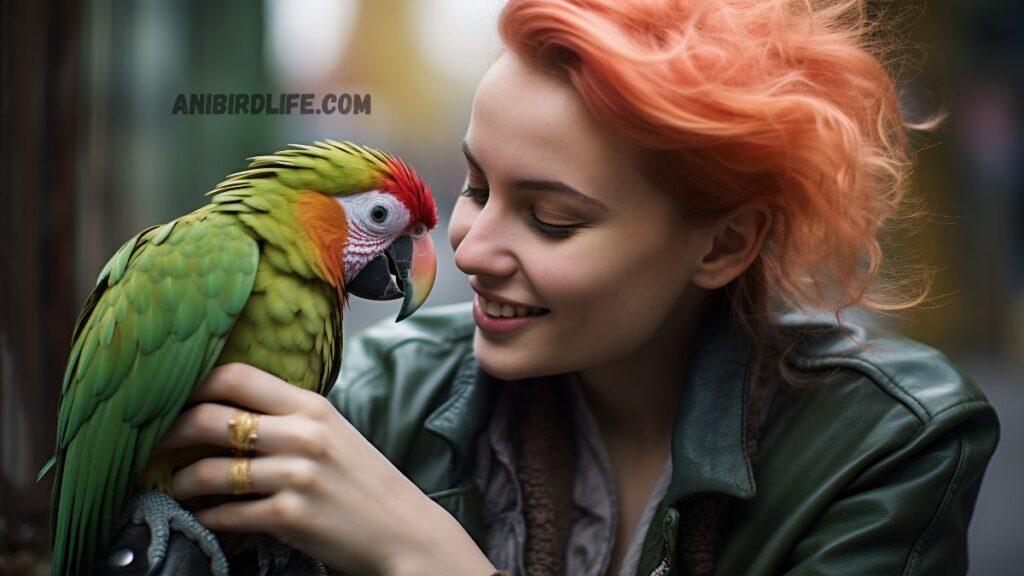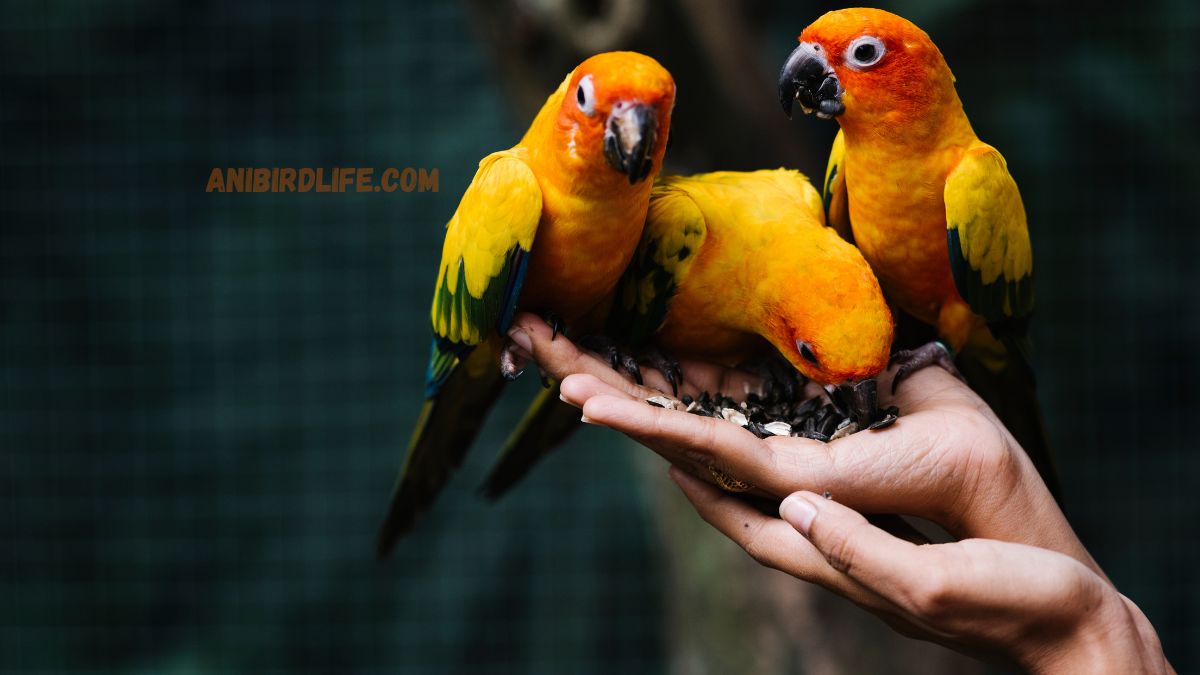People who both love birds yet face allergy issues should consider this series of review. You’re not alone! People often wish to adopt parrots yet they doubt their ability to tolerate bird-related substances such as feathers and dander and dust particles. Parrots with less allergen-promoting characteristics exist among specific breeds to benefit allergy-sensitive bird owners.
In this article, we list 5 hypoallergenic parrot breeds that can be successfully kept by allergy sufferers, as well as how to care for them and reduce allergens in your home.
Are Parrots Hypoallergenic Even with a Feathered Friend?
Before we get into the breeds, we should clarify what makes a parrot hypoallergenic. Parrots also produce dander a fine powder that helps keep their feathers healthy. This dander, along with feather dust and droppings, can cause allergies for some people. The selection of specific Hypoallergenic parrot breeds which create minimal dander or dust amounts provides a suitable choice for individuals susceptible to allergies.
These are the main elements which determine how hypoallergenic a parrot becomes:
The natural tendency for some parrots involves minimal dander emission as a part of their physiology.
Feathers from specific types of species cause minimal dust particles to be released.
Smaller types of parrots tend to release fewer allergenic substances than large parrots.
Grooming activities of parrots directly correlate to their allergen transmission as birds who nurture themselves less spread fewer substances causing allergies.
The following section will review the five most suitable hypoallergenic parrot breeds that are suitable for allergy-sensitive owners. The selection of particular parrot breeds allows allergy-prone people to find species with reduced dander and dust production levels.

1. Budgerigar (Budgie)
Why Budgies Are Hypoallergenic
Budgerigars or budgies stand as a top selection of parrot breeds suitable for people with allergies. Small parrots generate lower amounts of dander and feather dust as compared to bigger Hypoallergenic parrot breeds. These birds mature small while needing little maintenance so they provide a good option to owners with sensitive conditions.
Personality and Care
The budgie pet species displays sociable behavior with intellectual abilities and easy capacity to receive training. Budgies acquire the capability to replicate sounds including words which creates entertaining companionship opportunities. The budgie species maintains best health in duos and small group settings when fed with seeds and pellets together with vegetable and fruits from their diet.
Tips for Allergy Sufferers
Regular cleaning of the cage space helps reduce the accumulation of dust together with dander.
An air purifier system should be used in order to minimize airborne allergens.
Regular bathing of your budgie allows you to maintain clean feathers.
2. Pionus Parrot
Why Pionus Parrots Are Hypoallergenic
Pionus parrots comes along with their peaceful personality and minimal dander emission. Pionus birds avoid heavy duster behavior which makes them suitable for allergy-sensitive individuals.
Personality and Care
In comparison to other parrots Pionus species exhibit docile nature and strong affectionate traits and minimal vocalization characteristics.
Their limited search for outside entertainment does not interfere with their desire to connect with family members nor their willingness to spend time alone. Birds of this species need extensive cages along with numerous toys and receive the best results through consuming fresh vegetation alongside premium pellets.
Tips for Allergy Sufferers
The placement of a cage should be avoided in carpeted areas since carpets efficiently capture allergens.
The HEPA filter will help capture airborne particulates in the environment.
After contacting your Pionus parrot always perform handwashing rituals.

3. Eclectus Parrot
Why Eclectus Parrots Are Hypoallergenic
The feather dust production from Eclectus parrots remains remarkably low. These colorful birds with their peaceful character suit bird lovers particularly well when allergic conditions are present in the household.
Personality and Care
The eclectic parrots show remarkable coloring while remaining very approachable to people. These birds possess very high intelligence and receive training to follow specific cues or reproduce human speech patterns.
When providing food for African Greys one must prepare fresh vegetable and nut mixes because these birds require dietary proteins that unfold more gradually than other parrots.
Tips for Allergy Sufferers
You should place your parrot cage in a properly ventilated part of your home where allergen concentrations will stay lower.
Use a soaked fabric to clean surfaces as you remove dust accumulation with the same cloth.
Scented cleaning products should be avoided since they create respiratory irritation in your parrot.
4. Quaker Parrot (Monk Parakeet)
Why Quaker Parrots Are Hypoallergenic
The dander-producing abilities of Quaker parrots (Monk parakeets) remain lower when compared to larger species of parrots. The social and playful attributes of these birds make them attractive pets for families with allergies as well as for people with allergies.
Personality and Care
The species of Quaker parrots demonstrate high intellect through their desire to bond with their human caretakers. These birds possess great talent for vocalization and master numerous words in their vocabulary.
Providing multiple toys and intellectual activities becomes crucial for mental stimulation of these birds. The health of your pet requires a combination between seeds and pellets with fresh vegetable food products.
Tips for Allergy Sufferers
Daily cleaning of the bird cage should be performed to stop allergens from accumulating.
A vacuum using HEPA filtration can be employed to clean the nearby areas.
Translation of this sentence shows that minimal contact with your Quaker parrot can help decrease the amount of dander you inhale.
5. Cockatiel
Why Cockatiels Are Hypoallergenic
Cockatiels serve as an outstanding option for people dealing with allergies. The small parrot variety creates minimal amounts of allergens while staying easy to care for. People who love birds consider them their favorites because these animals possess friendly characteristics along with a loving nature.
Personality and Care
The distinctive personality feature of Cockatiels along with their ability to repeat sounds makes them stand out. With proper training these birds become able to learn tricks alongside performing well during time spent with their owner groups. A mixture of seeds, pellets in addition to fresh fruits and vegetables serves as the best diet for a healthy and content cockatiel.
Tips for Allergy Sufferers
Regular bathing of your cockatiel helps minimize the spreading of dander.
Your cage should incorporate replaceable and easy-to-clean liner material.
Your cockatiel’s habitat needs an uncluttered environment with minimal dust accumulation.
How to Minimize Allergens When Owning a Parrot
Your decision to buy hypoallergenic parrots remains important but you have to implement various steps to minimize home allergens. Here are some tips:
Clean the Cage Regularly:The removal of allergens depends heavily on performing regular maintenance of your cage. A routine cleaning process must include daily removal of droppings combined with daily removal of food debris and daily removal of feathers and weekly deep cage cleansing.
Use an Air Purifier:An HEPA air purifier combined with its intake brushes can successfully capture airborne allergens such as dander and dust.
Bathe Your Parrot:Basically, bathing your parrot becomes essential since it minimizes dander and maintains a clean appearance of their feathers.
Wash Your Hands:Washing your hands should always be performed after touching your parrot and cleaning its cage.
Choose the Right Cage Location:Position the cage where it can be easily maintained in a floor made of natural hardwood or tiles. Any surface covered in carpet poses a problem because it traps air allergens.
Vacuum Frequently:A HEPA-filtered vacuum machine should be used to remove allergens from the environment near your parrot’s cage.
Conclusion: Hypoallergenic Parrot Breeds
Although allergy suffers may benefit from getting a parrot as a pet they can still discover satisfaction from this relationship. You can find hypoallergenic parrot breeds consisting of Budgie Pionus Eclectus Quaker Parrot and Cockatiel for allergy-free enjoyment. The key to experiencing a happy and healthy parrot life with minimal allergic symptoms involves residential allergen control and follows a direct path to success.
Pet owners dealing with allergies can find ideal companions in these hypoallergenic parrot breeds irrespective of their experience level. Which breed of these hypoallergenic parrots will you select?
